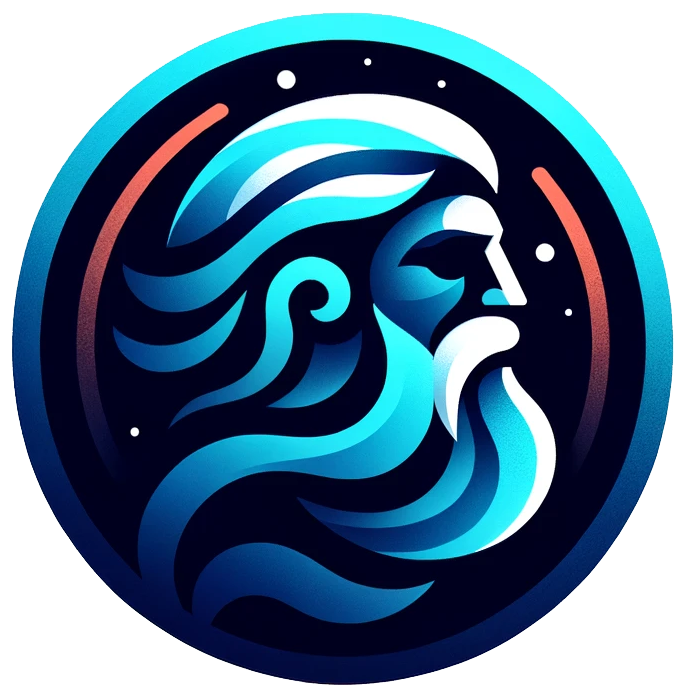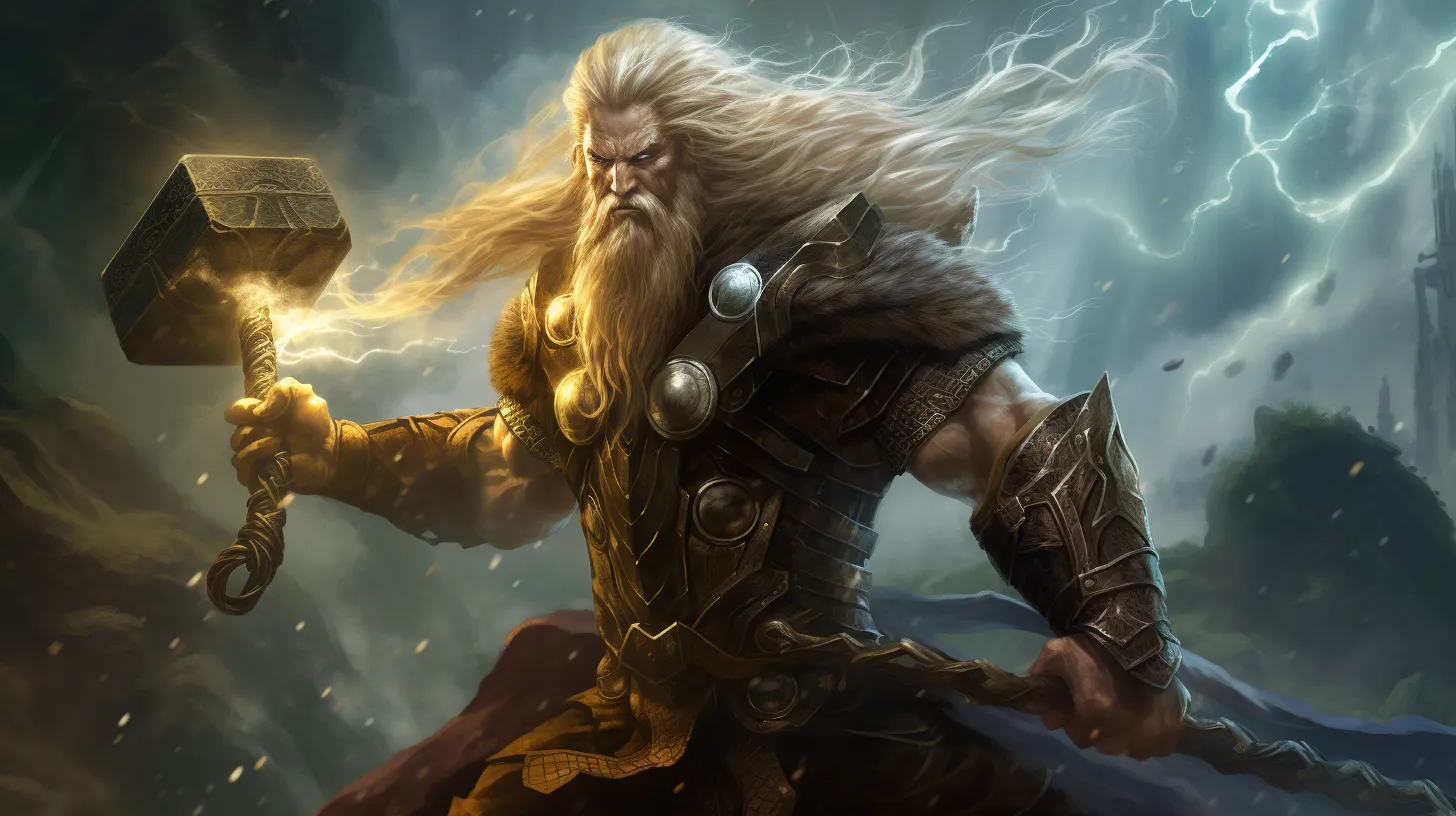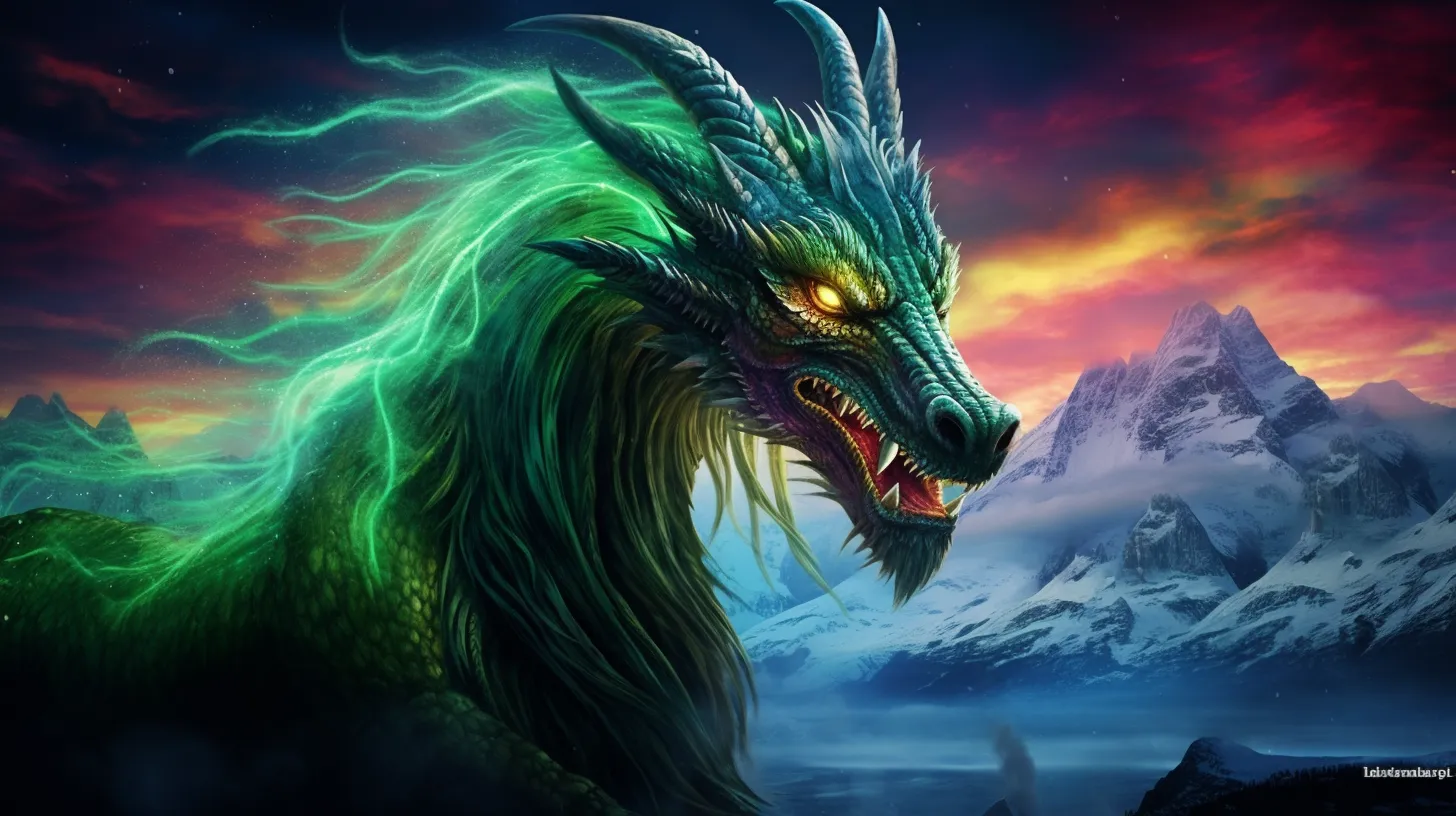A significant number of people in Iceland, around 70%, still hold a belief in elves, showing how deeply rooted Norse mythology is in their culture.
As you investigate this ancient lore, you’ll traverse a universe filled with powerful deities like the Aesir, who hold dominion, and the Norns, who craft destinies. You’ll gain insight into Odin’s relentless pursuit of wisdom and appreciate Thor’s formidable might.
Learning the meanings of runes will provide you with insights into fate, and the epic narratives will shape your decision-making. These stories are more than just tales; they’re lessons in how to gain respect from allies and adversaries alike.
Each narrative equips you with the knowledge of past generations, ready for you to apply its wisdom in modern times.
‘Embrace the ancient wisdom of Norse gods and heroes to navigate today’s challenges with the same courage and insight.’
Key Takeaways
- Norse mythology is a collection of ancient tales that originated between the 8th and 11th centuries and serve as the sinews of Viking heritage.
- The pantheon of gods and goddesses in Norse mythology has unique attributes and stories, with their powers shaping the cosmos and engaging in dramatic feuds and alliances.
- Norse mythology features heroes and mortals who have accomplished heroic feats and engaged in epic battles, influencing literature and leaving a lasting impact on popular culture.
- Rites, rituals, and symbolism play a significant role in Norse mythology, with ceremonies honoring gods, symbolic offerings, funerary customs, and hidden symbolism, including the power of runes and the presence of animal companions and sacred places.
Origins of Norse Myths
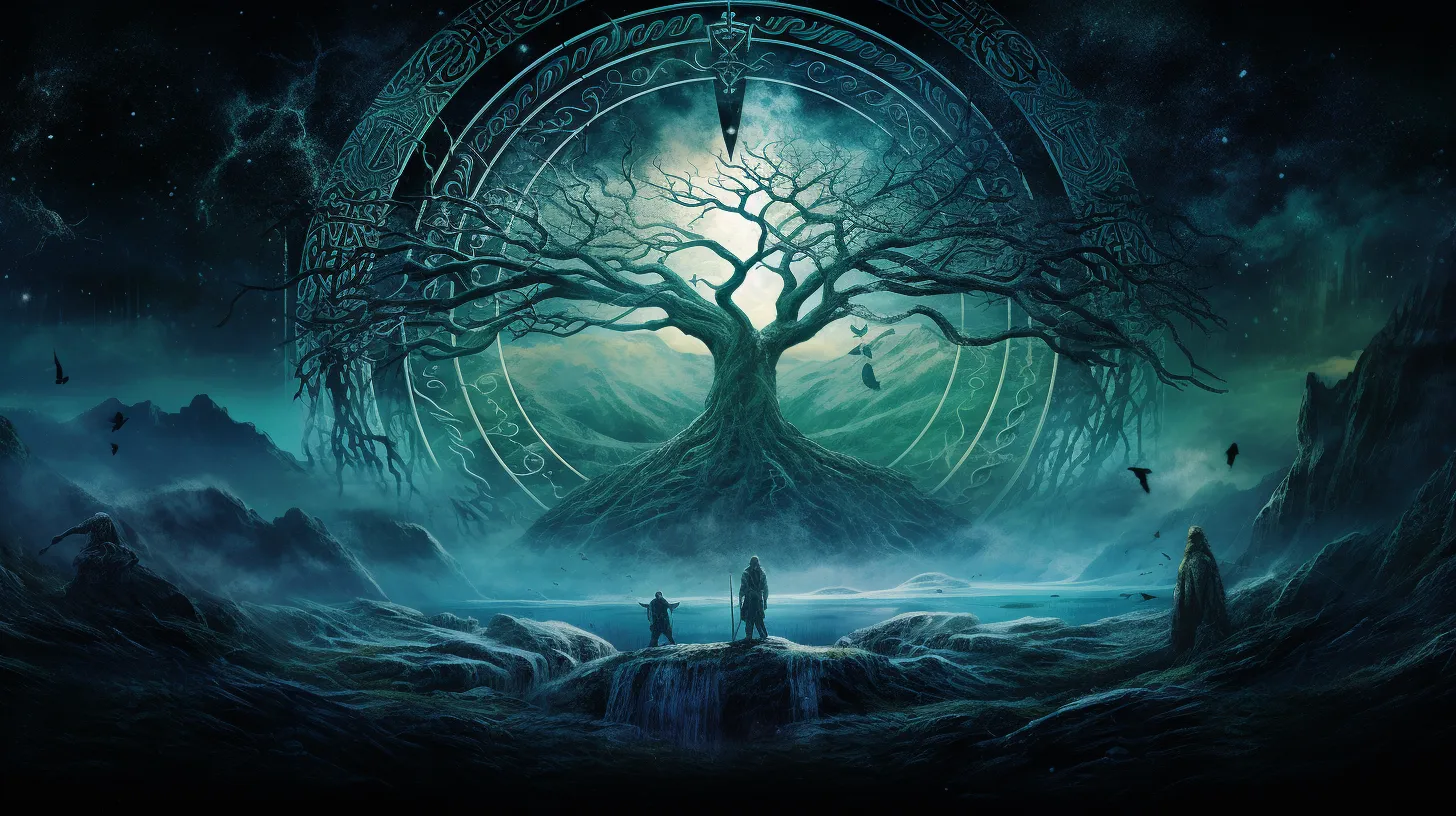
In your exploration of Norse mythology, you’ll find that its origins lie in the mythic narratives of the Scandinavian people from the 8th to the 11th centuries. These primordial tales aren’t mere fables; they’re the very sinews of Viking heritage.
Your grasp of Norse cosmology begins with the creation myths, where worlds emerge from the void and gods shape humanity from the earth’s elements. As you delve deeper, you’ll encounter the pantheon of Norse gods and goddesses, each embodying the might and mystery that you seek to understand and harness.
Norse mythology in literature weaves these deities into epic sagas, enthralling you with their power. And even today, Norse mythology in popular culture stands as a testament to its timeless resonance and your unyielding command over its legendary prowess.
The Pantheon of Gods

You’ll discover that among the numerous deities of Norse mythology, a dozen stand as the principal gods and goddesses of the pantheon, each with unique attributes and stories.
Their powers and abilities shape the cosmos, from Odin’s unmatched wisdom to Thor’s thunderous might. These gods aren’t just mighty; they’re entwined in a web of relationships and conflicts, their feuds and alliances as dramatic as the storms and calms they command.
Your mastery over these sagas deepens as you explore the fervent worship and devotion they inspired, understanding the gods’ pivotal role in guiding and influencing everyday life.
As you delve into their depictions in art and literature, you’ll find that controlling these narratives is akin to wielding the gods’ own formidable power.
Legendary Heroes and Mortals
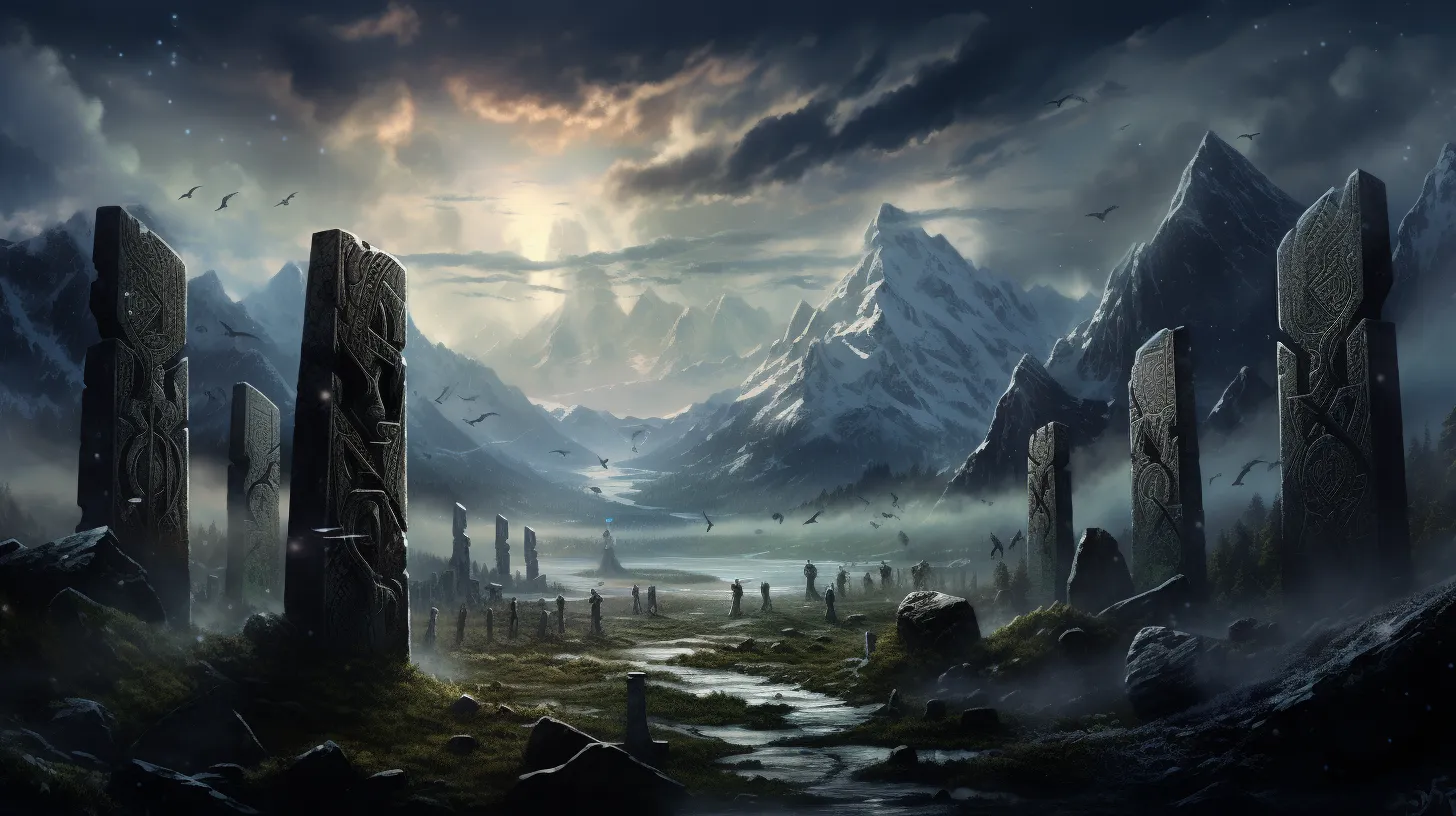
Shifting focus from the divine to the earthly, let’s meet the legendary heroes and mortals who are just as vital to Norse mythology’s enduring legacy.
These figures, etched in the annals of time, have performed heroic feats that resonate through the ages, their tales of bravery shaping our understanding of courage.
- Heroic feats: Sigurd’s slaying of the dragon Fafnir exemplifies valor.
- Epic battles: Beowulf’s confrontations with monstrous foes inspire awe.
- Norse mythology in literature: These sagas have deeply influenced fantasy novels.
- Female heroes: acknowledge Gudrun and Skadi’s powerful narratives.
- Norse mythology in popular culture: Films and TV shows invigorate these myths, propelling Norse heroes onto modern screens.
Embrace these legends; let their stories guide your pursuit of excellence and control over fate’s capricious winds.
Rites and Rituals
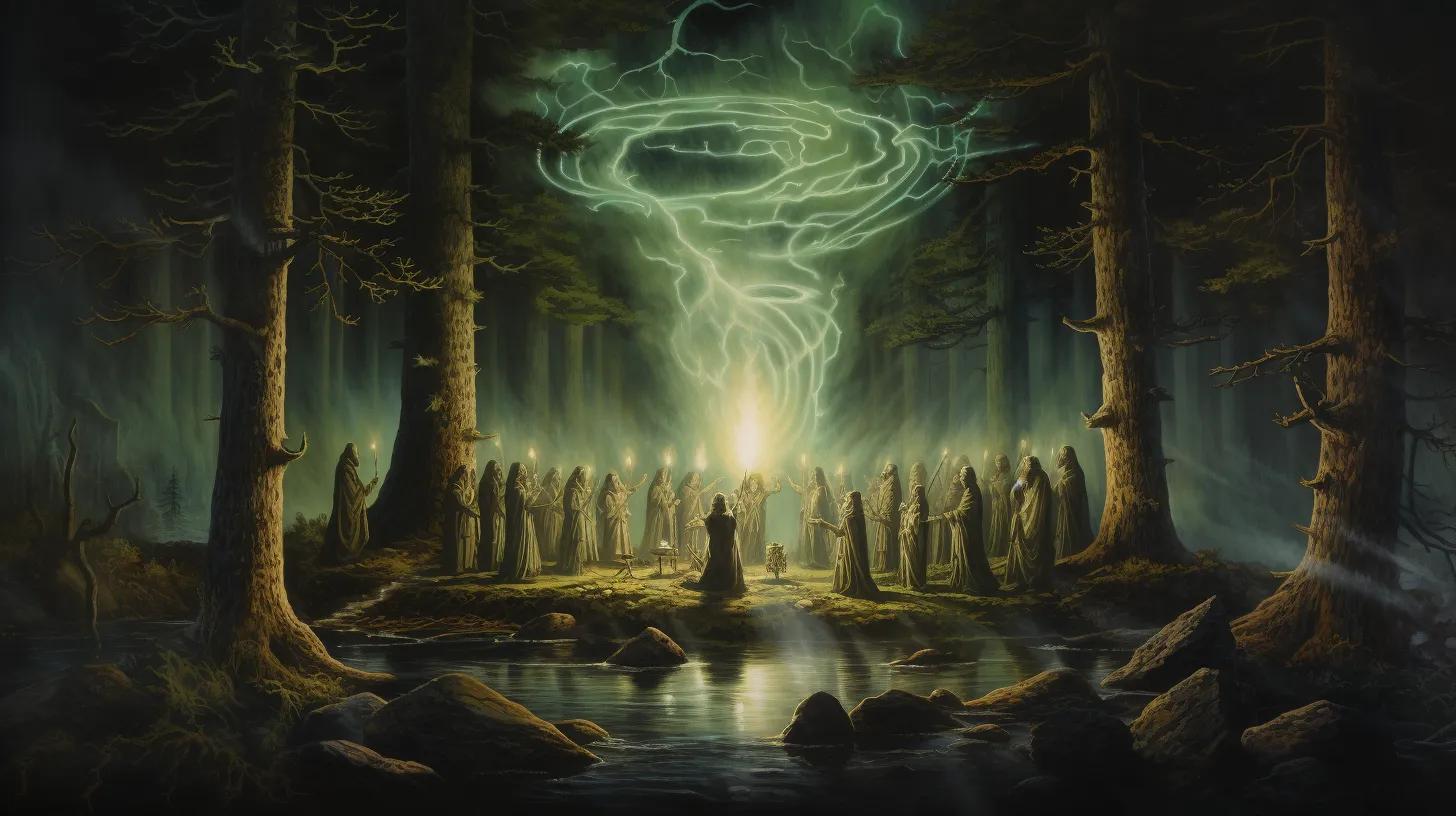
Delve into the rites and rituals of Norse mythology, and you’ll uncover the ceremonies that both honored the gods and marked significant life events. With each symbolic offering, you’d invoke the divine presence, seeking blessings and favor.
The rituals for protection weren’t mere superstitions; they were potent acts, woven into the fabric of daily life, safeguarding against malevolent forces.
Funerary customs were particularly solemn, ensuring a revered transition to the afterlife. Fertility ceremonies, on the other hand, celebrate life’s generative power, which is essential for community survival.
As you stood on the cusp of adulthood, rites of passage would demand your courage, branding the warrior’s spirit upon your soul. Each ritual is a testament to the ancient Norse’s mastery over the uncontrollable, shaping destiny with iron will and fervent belief.
Realms of the Universe
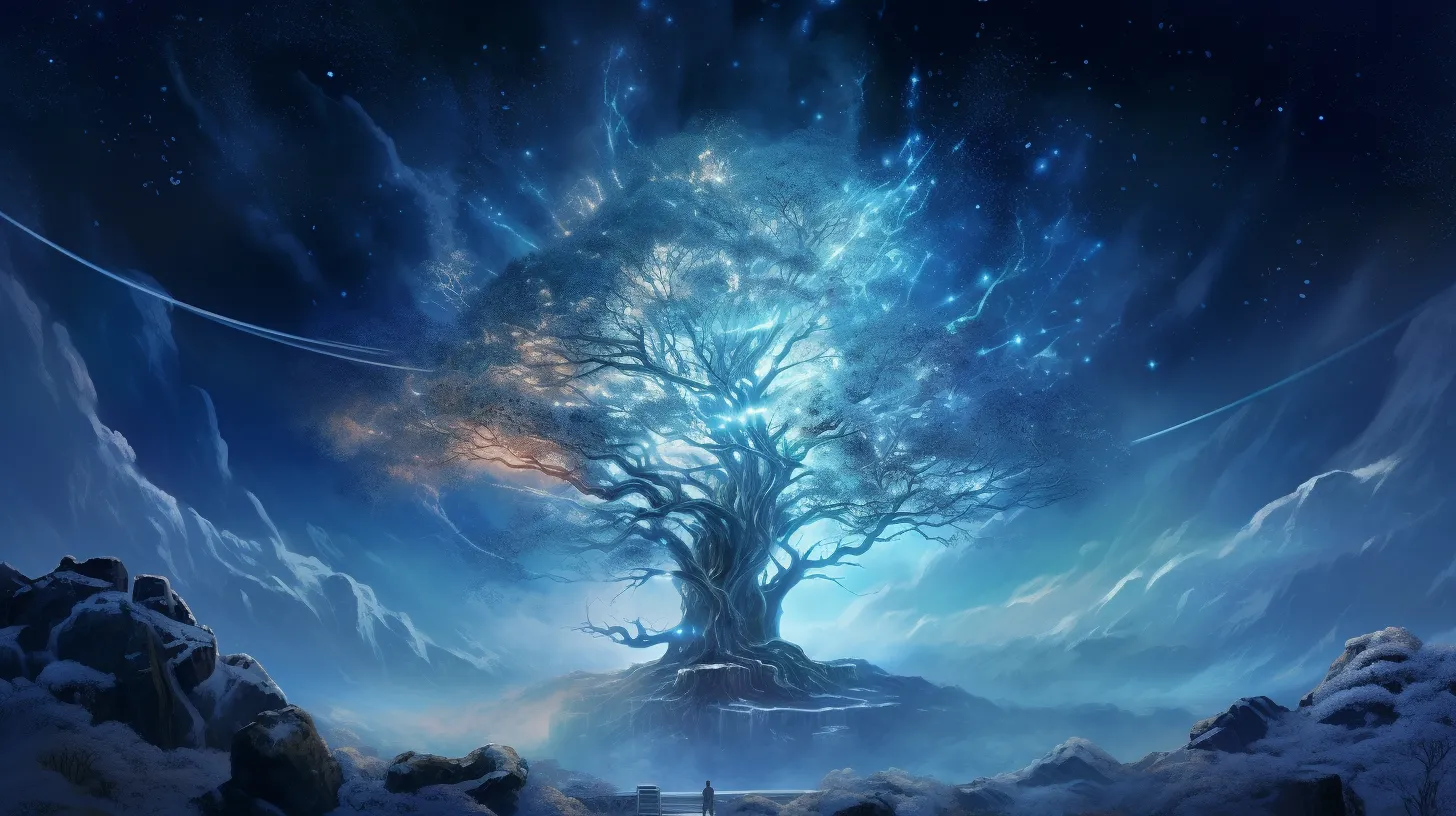
As you embark on your exploration of Norse mythology, nine distinct realms emerge, each interwoven through the branches and roots of the cosmic world tree, Yggdrasil. Yggdrasil’s significance can’t be overstated; it’s the very framework of Norse cosmology, connecting realms in a network of cosmic balance.
-
Asgard: Home of the gods, overseen by Odin, linked to humanity’s Midgard through the Bifrost
-
Midgard: Earthly domain where humans play pivotal roles, shaping tales and destinies.
-
Interactions: Asgard and Midgard are intertwined, with gods and humans frequently crossing paths.
-
Beyond: Venturing into realms like the icy Niflheim or fiery Muspelheim reveals a diverse cosmology.
-
Connections: Each realm affects the others, reflecting a universe where every action resonates through the worlds.
Command your understanding of these realms, for they hold keys to the Norse universe’s intricate mythos.
Iconic Mythical Creatures

You’ll come across a myriad of iconic mythical creatures as you dive into Norse mythology, each with its own unique story and significance.
These mysterious beasts aren’t just figments of imagination; they’re woven into the fabric of Norse culture, symbolizing forces of nature and human psyche.
The Jotnar, colossal adversaries to the gods, embody chaos and raw strength, while the dwarfs represent unmatched skill and craftsmanship.
In Norse literature, creatures such as the Norns, who weave the destiny of all beings, add layers of profound symbolism. The Fenrir and Midgard Serpent, central to the cataclysmic Ragnarok, are depicted with awe in art, reflecting their pivotal role.
And today, these Norse creatures have surged into popular culture, asserting their timeless allure.
Sagas and Eddas
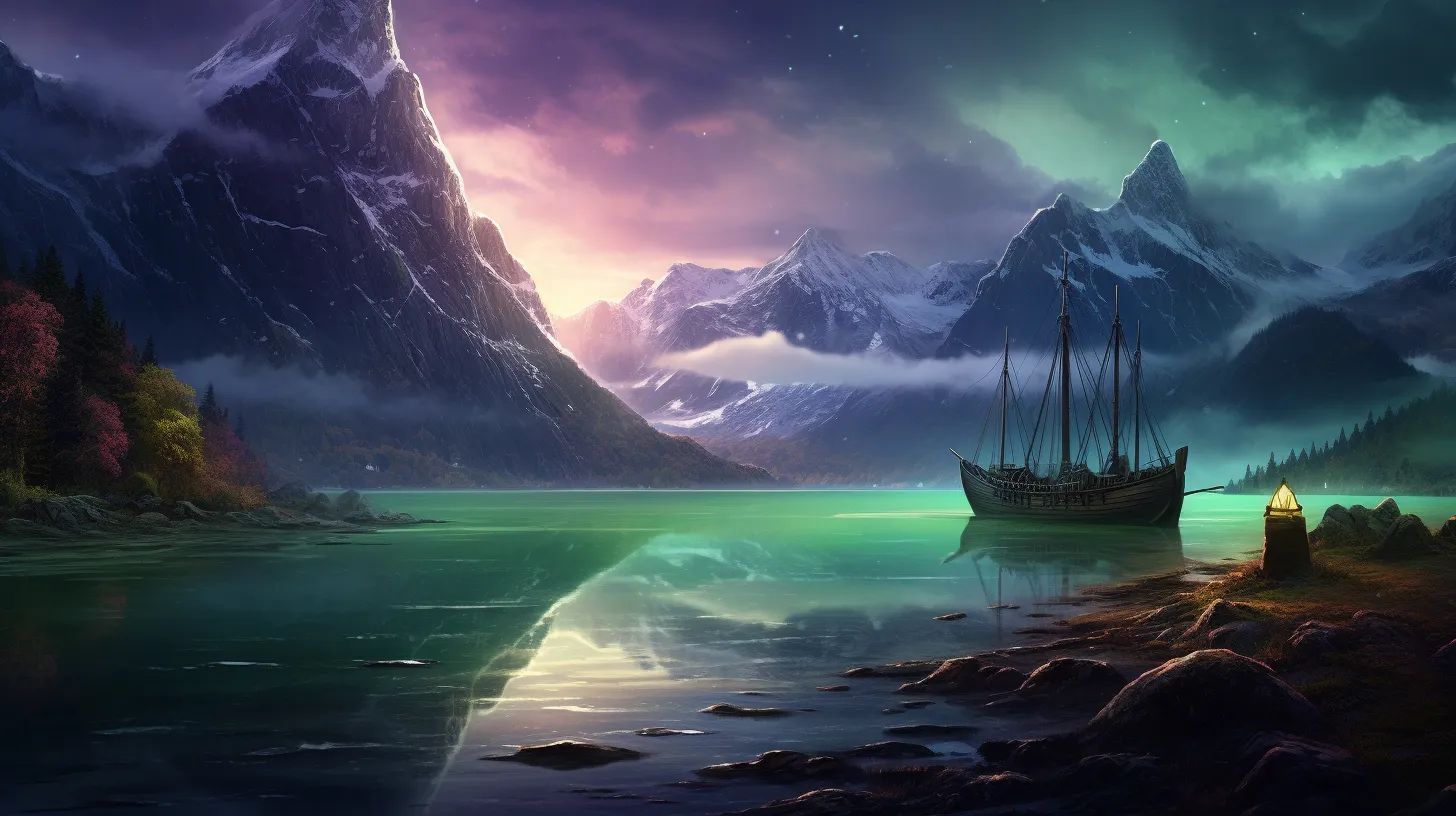
When exploring the vast tapestry of Norse mythology, one inevitably encounters the Sagas and Eddas, ancient texts that are our primary sources for these enduring legends.
These chronicles aren’t just dusty tomes; they pulse with the lifeblood of Viking traditions and embody the essence of symbolic storytelling.
-
Prose Edda and Poetic Edda: Cornerstones of Norse cosmology, weaving tales of gods and the universe.
-
Mythical Heroes: Celebrated in sagas, their feats encapsulate the warrior ethos.
-
Viking Traditions: Illuminated through sagas, reflecting societal norms and values.
-
Symbolic Storytelling: A profound method to impart wisdom and moral lessons.
-
Oral Transmission: The life force of these myths, ensuring their survival across generations.
Command your understanding of these ancient narratives to grasp the profound legacy of the Norsemen.
Symbols and Meanings
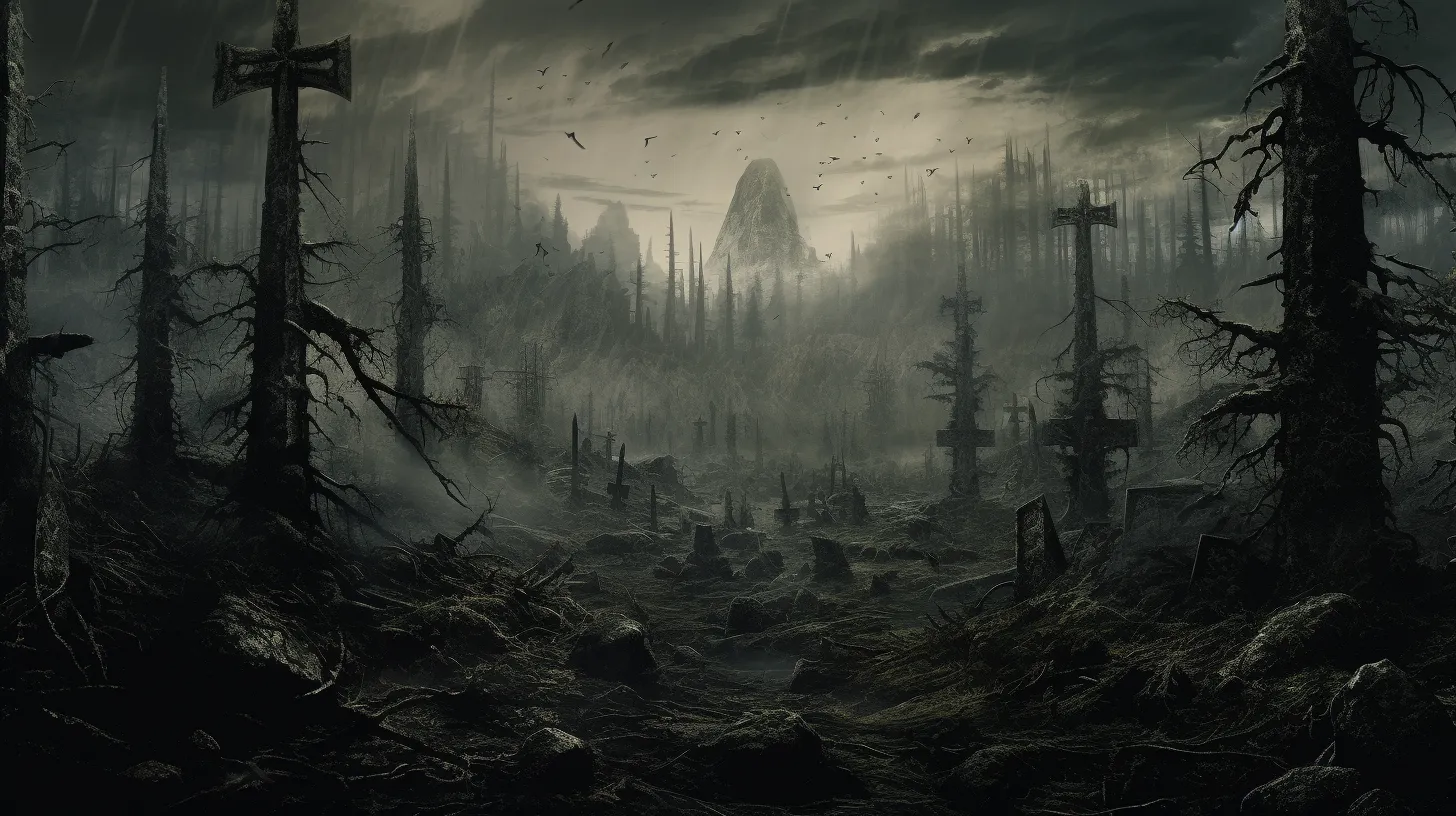
Delving into Norse mythology’s symbols and meanings, you’ll uncover the profound insights embedded in the Vikings’ revered icons and tales.
Uncovering hidden symbolism in Norse mythology reveals a tapestry woven with the threads of destiny and power. The power of runes is indisputable, each carving a conduit to divine forces, offering you control over the narratives of fate.
Animal companions serve as more than mere beasts; they’re the symbolic bearers of wisdom, strength, and loyalty, guiding you to conquer your quests.
In sacred places, you’ll find the keys to understanding the cosmos, each site a bastion of ancient knowledge.
And the gods and goddesses? They’re not just characters but the embodiment of life’s dualities, their stories instructing you on wielding your own power—wisdom you can harness to navigate life’s tumultuous seas.
Influence on Modern Culture
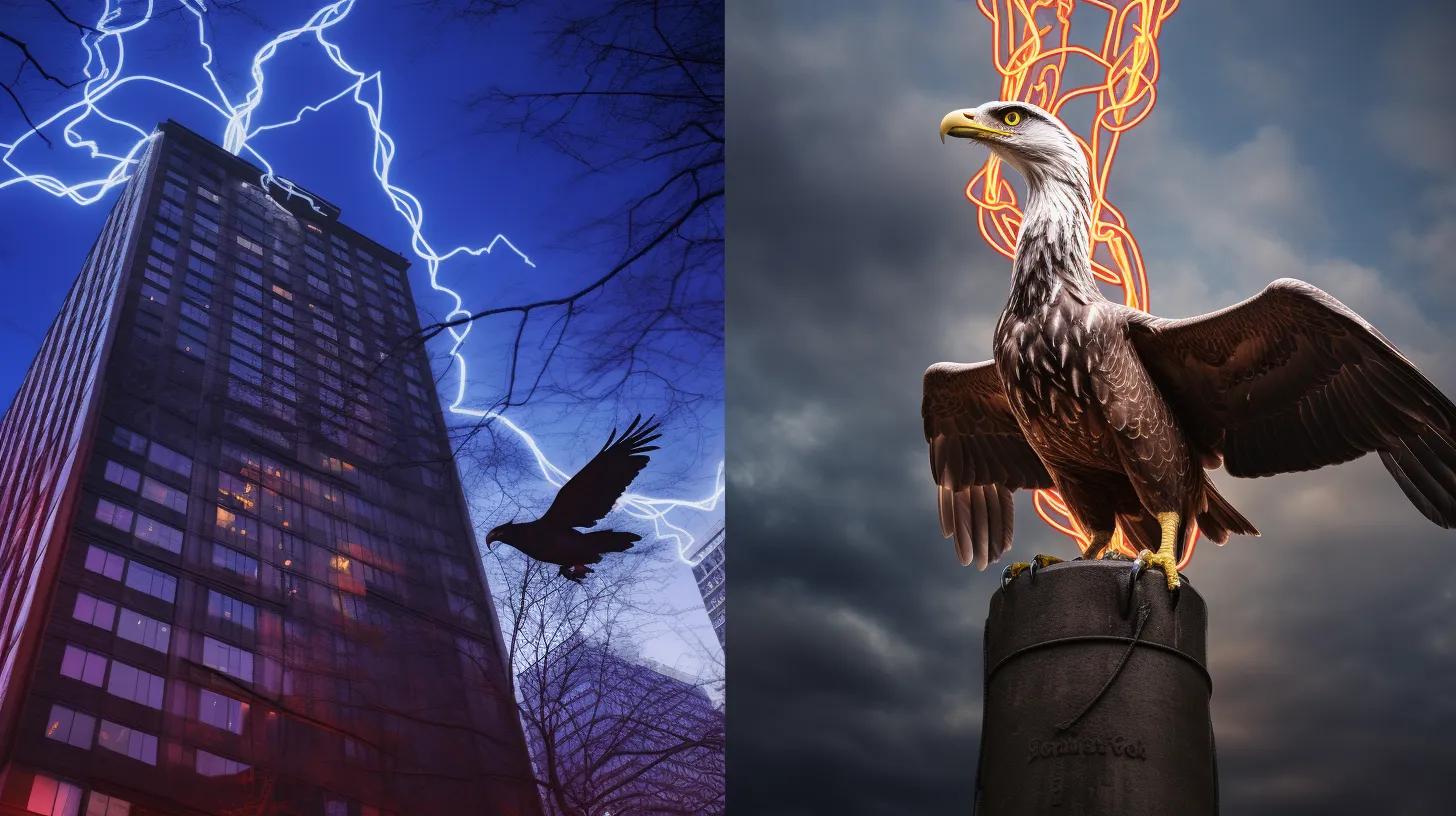
Norse mythology’s impact on today’s entertainment is undeniable, infusing books, films, and TV series with its timeless themes and characters. You’ve witnessed its gripping narratives unfold in various forms of media.
Behold how it’s woven into the fabric of modern life:
-
Norse mythology in video games: Games like ‘God of War’ immerse you in epic sagas of gods and monsters.
-
Norse mythology in music: Bands craft songs that echo the ancient deities’ tales, empowering you.
-
Norse mythology in fashion: Clothing lines inspired by Viking lore give you an aura of mystique.
-
Norse mythology in architecture: Structures rise, inspired by the mythic halls of Asgard, commanding your skyline.
-
Norse mythology in contemporary artwork: Visual arts capture the essence of the myths, adorning spaces with legendary grandeur.
Embrace the wisdom of the ancients and wield their mythos to master the cultural landscape.
End of the Norse Cosmos
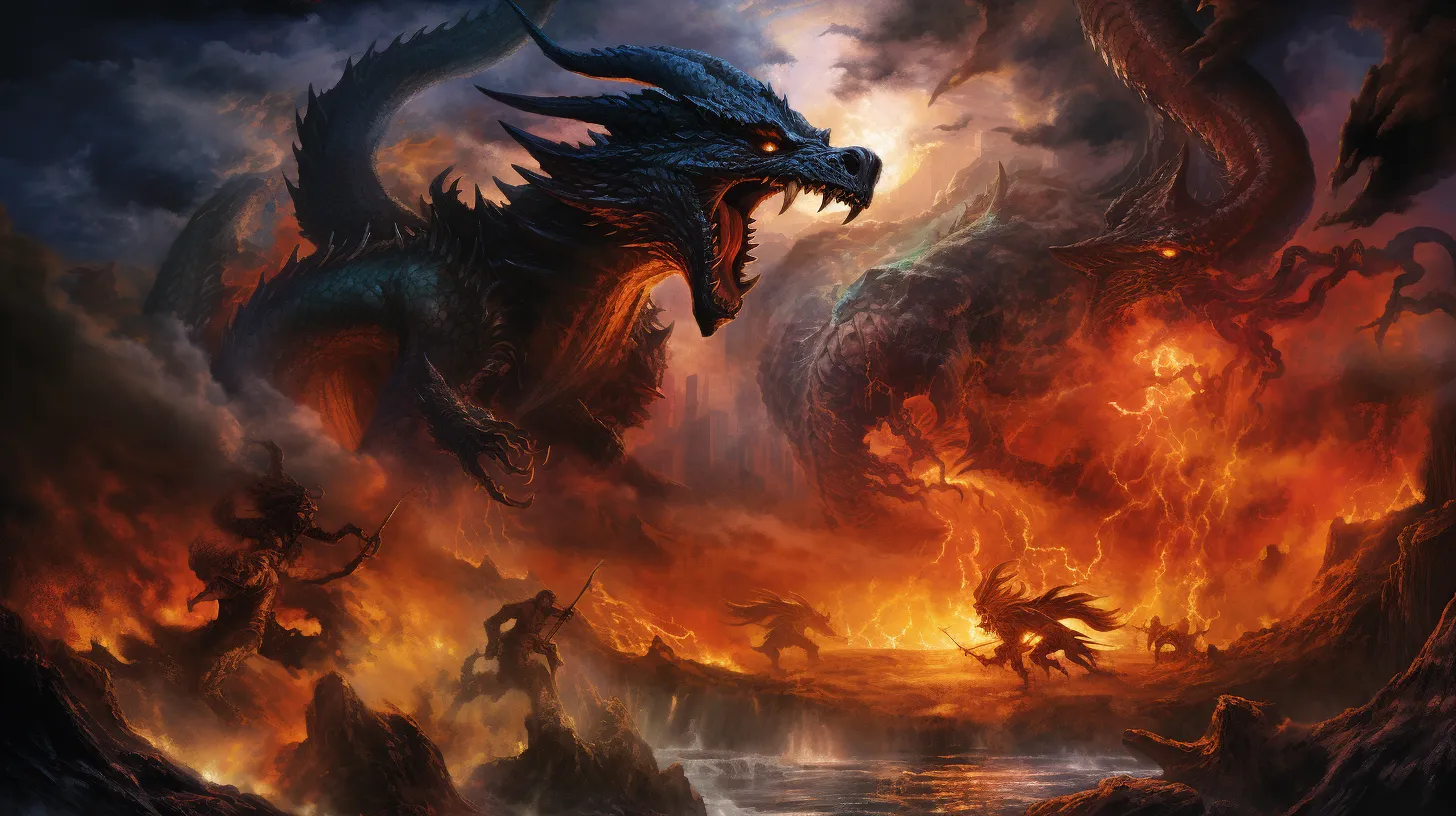
How will the cosmic tapestry of Norse mythology be reshaped after the cataclysmic events of Ragnarok, you might wonder? The apocalypse and rebirth foretold present a destiny where the old must perish for the new to emerge.
Heimdall, the vigilant sentinel, will sound his horn, marking the onset of this transformative chaos. The great battle in Ragnarok will unfold with staggering significance as the cosmos witnesses its fiercest warriors in their final stand.
Odin, the Allfather, and Thor, the thunderous protector, will meet their fates, their demises sealing the end of an era.
Yet, exploring the new world after Ragnarok reveals a vision of hope—a realm reborn from the ashes of the old, promising you command over untold myths and legacies yet to be woven.
